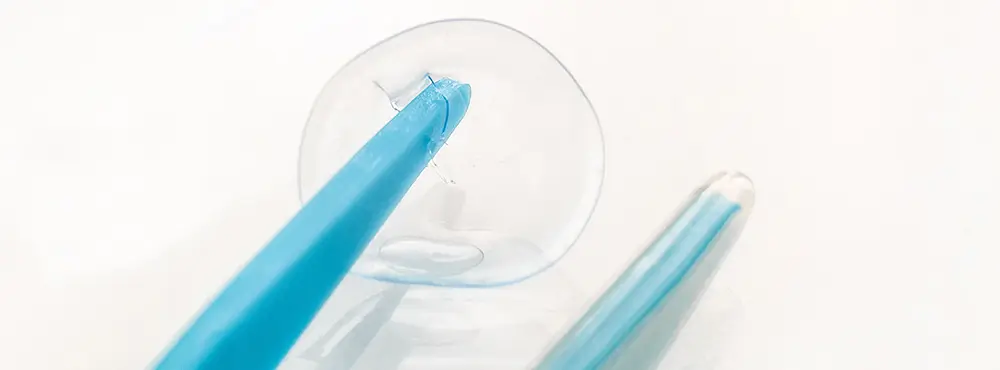Accidents happen, and with contact lenses, you might find that every now and again, your lenses tear while you’re putting them in. This might mean half of a lens becomes trapped in the eye.
As worrying as this may sound, a broken lens can easily be removed and cannot become permanently stuck. For more information on how to remove a broken lens, read below.
What happens if you wear a torn contact lens?
You should always remove a contact lens as soon as you realise it is broken. If not, this can cause discomfort, redness and may interfere with your vision.
Another possibility is that the jagged edges of the torn lens can scratch the surface of your cornea. For this reason, if you’ve worn a torn lens, you should immediately seek advice from your optician.
How to remove a torn contact lens
It’s imperative that you remove a broken lens as soon as possible. Follow these simple steps to ensure you safely and effectively remove the broken lens from your eye :
- Wash and dry hands thoroughly.
- Apply some rewetting drops to moisten your eye.
- Try and blink to move the pieces of contact lens to the outer corner of your eye.
- Gently massage the lower and upper eyelids until you feel the pieces have come loose.
- Carefully lift your eyelid and remove the lens fragments that are attached.
- Rinse your eyes with a saline solution.
- Repeat until you’re confident all of the lens has been removed.
Please note that the above procedure is not suitable for rigid gas permeable (RGP) lenses. You should immediately seek help from an eye doctor if a broken RGP lens is stuck in your eye.
Can a contact lens get stuck behind the eye?
You may have heard somewhere that a contact lens can become wedged behind the eye – this is one of the most common myths among contact lens wearers. Whilst it is possible for a lens to slip to the side of the eye or fall out of place, it is impossible for a lens to get lost or trapped at the back of your eye.
According to the American Academy of Ophthalmology, a contact lens can only go as far as the crease in the conjunctiva under the upper eye.
Can a contact lens melt in your eyes?
Another common myth is that contact lenses can melt in your eyes when they are exposed to heat. This is not true – in fact, many firefighters wear contact lenses. So, there is no need to worry about your contact lenses melting when barbecuing over the weekend.
In order for a lens to melt, you would have to keep your eyes open and very close to an extremely hot flame over a prolonged period of time. We don’t recommend testing this out.
Disclaimer: The advice in this article is for informational purposes only and does not replace medical care or an in-person check-up. Please check with an eyecare professional before purchasing any products or remedies. For information on our article review process, please refer to our Editorial Policy.

 Offers
Offers Account
Account
 Favorite
Favorite
 Basket
Basket

 OFFERS
OFFERS
















